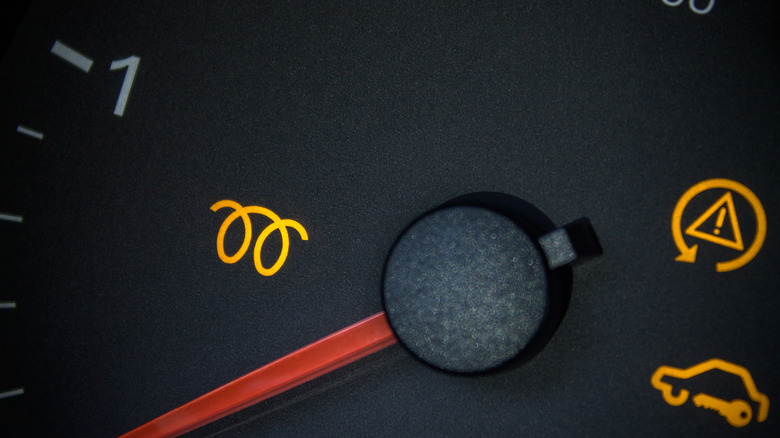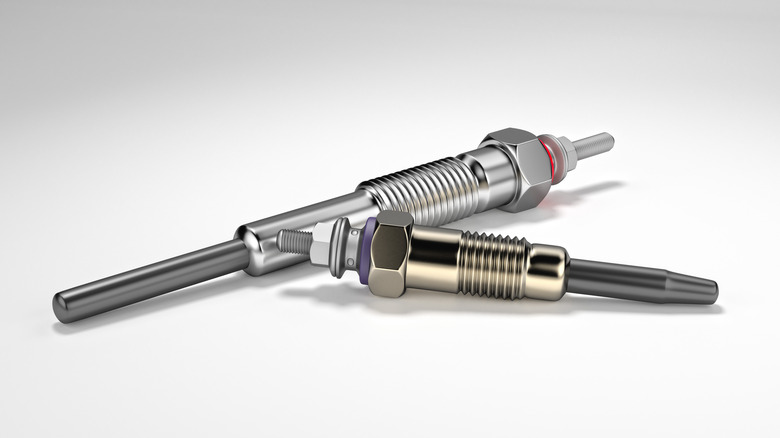The Reason Why Diesel Engines Don't Use Spark Plugs
Following the Industrial Revolution, steam emerged as the de facto power source for factories, ships, trains, and even some automobiles. However, German engineering student Rudolf Diesel believed that he could build a better mousetrap, leading to the invention of the engine that now bears his name. After several early missteps, testing in 1897 revealed that Diesel's new engine enjoyed 26.2% efficiency compared to just 10% for the still-popular steam engine. But how exactly does a diesel powerplant work?
In a typical gasoline engine, a mixture of air and fuel is compressed, then ignited by a spark plug, causing combustion. Diesel engines handle the combustion process a little differently. Inside a diesel, fuel is injected directly into a highly compressed chamber of air to cause combustion, forcing the piston down and turning the engine's crankshaft.
To be clear, diesel intake air is compressed approximately twice as much as the compression that occurs inside a gasoline engine, which leads to a lot of heat being generated, eliminating the need for an outside source of spark to ignite the mixture. The diesel fuel ignites automatically because the air is so hot.
Glow plugs aren't the same as spark plugs
If a diesel engine has an Achilles' heel, it's what happens when ambient temperatures are very cold and the engine block itself is also cold from lack of recent use, such as being parked overnight in wintertime. Even under high compression, the air inside a cylinder can fail to be hot enough to ignite the incoming fuel, so a little help is needed.
The first tool available is glow plugs (featured above), which do indeed bear a slight resemblance to spark plugs. Typically threaded into the engine's cylinder head, a glow plug has a heating element at the tip, onto which fuel is sprayed to induce combustion when the charge of compressed air itself is too cold. Glow plugs are powered by the vehicle's battery and unlike spark plugs, they're only needed at the immediate time of starting.
The other method to conquer low temperatures is an engine block heater which plugs into a household 110 volt electrical outlet and keeps the engine warm during periods of non-use so it starts up more easily. Depending on the make, model, and the climate where a diesel vehicle was sold, it may have one or both of these means to assist cold starts, though block heaters can also be installed at any time after vehicle purchase.

